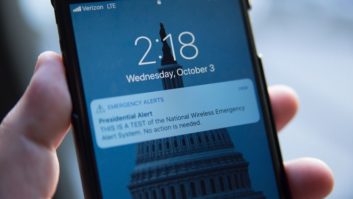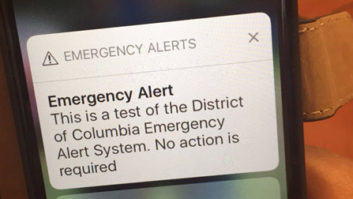Industry stakeholders are continuing to weigh in on the importance of updating the messages that come over the nation’s Wireless Emergency Alert (WEA) system — including the National Weather Service (NWS) and the chairman of the FCC.
Three months ago the NWS asked for public comment on the changes that the Federal Communications Commission was proposing to WEA, including expanding the maximum character count to a total of 360 characters (up from only 90 today). NWS solicited feedback on both the proposed expansion of weather warnings and the proposed content of the NWS messages carried by WEA, which is to take place in May 2019.
[Read: Nationwide EAS Test Results Reveal Strong Participation]
The WEA issue is also garnering new attention after FCC Chairman Ajit Pai issued a call to wireless carriers and standards bodies to continue the progress they have made toward implementing rules to improve the geographic targeting of these WEA alerts. He pressed parties to maintain focus on meeting the required implementation date later this year, citing by name the 3rd Generation Partnership Project (3GPP) as well as the Alliance for Telecommunications Industry Solutions (ATIS).
Last week, a 3GPP working group achieved what Pai called “a significant milestone” with the adoption of new technical specs that are expected to be voted on in March. ATIS is expected to finalize standards for improved WEA geotargeting by the end of next month.

These are important steps in implementing rules the FCC adopted last year to improve the geographic accuracy of Wireless Emergency Alerts, Pai said in a media release. Carriers must be able to deliver alerts to certain geotargeted — with no more than a one-tenth of a mile overshoot — by Nov. 30, 2019.
“Recognizing that there is still more work to be done, I urge all principals … to remain vigilant in their work to ensure that the benefits of enhanced wireless emergency alerts are made available by November, he said. “The American people want, expect and deserve the best possible public safety services, including the most precise targeting available for wireless alerts.”












